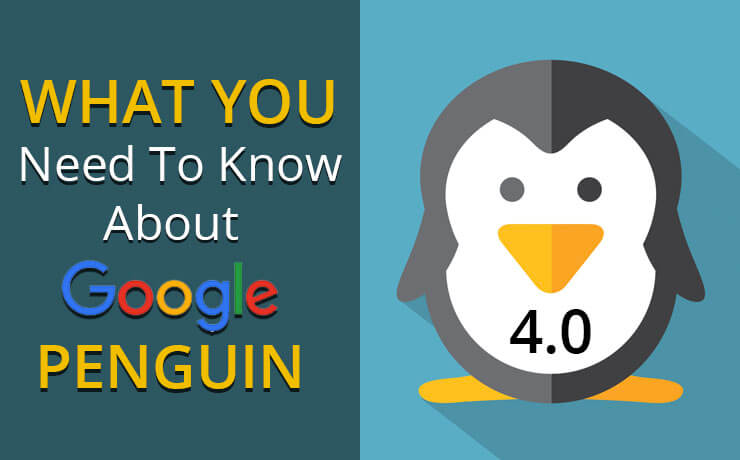Establishing a strong online presence is crucial for businesses in today’s digital age. A powerful tool is Google Business Profile. It’s a free platform that allows you to manage how your business appears on Google Search and Maps. You might be wondering, “What are the best practices for making the most of my Google Business Profile?” This question is on the minds of countless business owners and marketing professionals who understand the importance of online visibility. Let’s explore key strategies and best practices to harness the full potential of your Google Business Profile. Whether you’re a local brick-and-mortar store or an e-commerce giant, these insights will empower you to enhance your online presence, attract more customers, and ultimately boost your business’s success.
Claim and Verify Your Google Business Profile
One of the initial steps in optimizing your Google Business Profile is to claim and verify it. This process is essential because it not only establishes ownership but also boosts your credibility. When you claim and verify your profile, you gain access to a range of features that can enhance your visibility, such as the ability to respond to Google reviews and post updates.
To claim your profile, log into your Google account and visit the Google My Business website. Follow the prompts to enter your business information and verify your ownership. Google typically offers several verification methods, including postcards, phone calls, or email verification. Choose the method that suits you best and complete the verification process promptly.
Claiming and verifying your Google Business Profile (formerly known as Google My Business) is an important step to ensure that your business information is accurate and visible on Google Maps and in local search results. Here’s how you can claim and verify your Google Business Profile:
- Sign in to Google: Start by signing in to your Google account. If you don’t have one, you’ll need to create an account.
- Search for Your Business: Go to the Google Business Profile website (https://www.google.com/business) and click on the “Manage now” button. You can also search for your business name and location using Google Search or Google Maps.
- Claim Your Business: If your business is already listed, you’ll see a card with your business name. Click on it. If you don’t see your business, click on the “Add your business to Google” option.
- Provide or Update Business Information: You will be prompted to provide or update your business information, including the business name, address, phone number, category, website URL, and a brief description of your business. Make sure all the information is accurate and up-to-date.
- Choose a Verification Method: Google will ask you to verify your connection to the business. You will typically have several verification options. The most common methods include:
- Postcard by Mail: Google will send a postcard to the business address with a verification code. This can take a few days to arrive.
- Phone: If you’re eligible, you may have the option to receive a verification code via phone call or text message.
- Email: In some cases, Google may allow you to verify your business through email.
- Instant Verification: If your business has already been verified in Google Search Console, you may be eligible for instant verification.
- Verify Your Business: Depending on the verification method you chose, follow the instructions provided by Google to complete the verification process. For example, if you chose the postcard option, you’ll need to enter the verification code from the postcard once it arrives.
- Access and Manage Your Profile: Once your business is verified, you’ll have access to your Google Business Profile dashboard. Here, you can add more details about your business, such as photos, posts, and updates.
- Regularly Update Your Profile: It’s important to keep your business information up-to-date. Regularly check and manage your Google Business Profile to ensure accurate information, respond to reviews, and engage with your customers.
Remember that the verification process may take a few days, so be patient. Once your business is verified and your profile is complete, it will be more likely to appear in Google’s local search results, helping potential customers find your business more easily.
Accurate Business Information
The accuracy of your business information on your Google Business Profile is paramount. Ensure that your business name, address, phone number (NAP), and business hours are up to date and consistent with what you provide on your website and other online platforms. Inaccurate information can confuse potential customers and harm your search rankings.
Creating a comprehensive and informative Google Business Profile is crucial to make a positive impression on potential customers and improve your local search visibility. Here is the essential information you should include:
- Business Name: Ensure that your business name is accurate, consistent with your official branding, and not stuffed with keywords. Avoid adding unnecessary information like location or taglines.
- Address: Provide the complete and accurate physical address of your business. Double-check that it matches your actual location.
- Phone Number: Include a phone number that customers can use to contact you. Make sure it’s accurate and reachable during business hours.
- Website URL: Add a link to your website so customers can access more information about your business, products, and services.
- Category: Choose the most relevant category for your business. This helps Google understand what your business offers and ensures your profile appears in relevant searches.
- Business Description: Craft a concise and compelling business description (up to 750 characters) that provides an overview of your business. Highlight key products, services, or unique selling points.
- Hours of Operation: Specify your regular business hours, including opening and closing times for each day of the week. Update this information for holidays or special occasions.
- Attributes: Add relevant attributes to your profile to give customers more details about your business, such as whether it’s wheelchair-accessible, offers free Wi-Fi, accepts credit cards, etc.
- Photos and Videos: Upload high-quality photos and videos that showcase your business, products, services, and team. Include images of your storefront, interior, products, and any other visual elements that represent your brand.
- Google Posts: Regular blog post updates, offers, events, or news about your business. This keeps your profile fresh and engaging. Posts can include images, videos, and call-to-action buttons.
- Customer Reviews: Encourage customers to leave reviews on your profile. Respond to reviews, both positive and negative, to show that you value customer feedback and are actively engaged with your audience.
- Questions & Answers: Monitor and respond to customer questions in the Q&A section. Provide accurate and helpful information to potential customers.
- Services and Products: If applicable, list specific services or products you offer. Include details, prices, and descriptions to help customers understand what you provide.
- Appointment Booking and Reservation Links: If you offer appointment-based services or reservations, provide links to scheduling tools or booking platforms.
- COVID-19 Updates: If necessary, provide information about any COVID-19 safety measures, changes in business operations, or special precautions you’re taking.
Regularly review and update your Google Business Profile to ensure that all information is current and accurate. This will help improve your visibility in local searches and provide a better experience for potential customers who find your business online.
High-Quality Visual Content
Visual content, such as photos and videos, plays a pivotal role in creating a compelling Google Business Profile. High-quality images of your products, services, and the interior and exterior of your business can significantly influence potential customers’ perceptions. Encourage satisfied customers to upload their photos and share positive experiences. Visual content helps set expectations and builds trust with your audience.
Uploading the right types of photos and videos to your Google Business Profile can significantly enhance your online presence and provide potential customers with a better understanding of your business. Here are some types of photos and videos you should consider uploading:
Photos:
- Exterior Photos: Showcase the exterior of your business, including the storefront, signage, and any distinctive features. These photos help customers recognize your location.
- Interior Photos: Provide a glimpse inside your business, including the layout, decor, and ambiance. Highlight any unique or appealing aspects of your interior space.
- Product Photos: If you sell physical products, display clear and well-lit images of your products from different angles. Include detailed shots and close-ups of key items.
- Service Photos: For service-oriented businesses, showcase your team in action, performing services, or working with customers. Highlight the quality and professionalism of your services.
- Menu or Food Photos: If you’re a restaurant or food-related business, feature high-quality images of your menu items. Mouthwatering photos can entice potential diners.
- Before-and-After Photos: If applicable, show the transformation or results of your services. This can be particularly effective for businesses like salons, home renovation, or fitness studios.
- Event Photos: If you host events or special occasions, document them with photos. These can include grand openings, workshops, seminars, or community events.
- Team Photos: Introduce your team to customers. Share photos of your employees, their roles, and a bit about their personalities to create a personal connection.
- Customer Testimonials: Capture photos of satisfied customers (with their consent) or their testimonials. This adds authenticity to your profile.
Videos:
- Introduction Video: Create a short video (up to 30 seconds) that provides an overview of your business. Share your story, mission, or what sets your business apart.
- Product Demonstrations: Showcase how your products work or how your services are delivered through video demonstrations. This can build trust and understanding.
- Virtual Tours: Offer a virtual tour of your business premises, allowing viewers to explore your space from the comfort of their homes.
- Customer Testimonials: Record video testimonials from satisfied customers. Hearing real customers speak about their positive experiences can be persuasive.
- “How-To” Videos: Share educational content related to your industry or products. These videos can establish your expertise and provide value to potential customers.
- Event Highlights: Capture the highlights of special events or promotions hosted by your business. This can create excitement and interest.
- Behind-the-Scenes: Give customers a peek behind the scenes. Show how products are made, services are delivered, or the daily operations of your business.
- Staff Interviews: Conduct interviews with your team members, discussing their roles, expertise, and why they love working at your business.
Remember to ensure that all photos and videos are of high quality, well-lit, and properly framed. They should accurately represent your business and align with your brand identity. Regularly update your visual content to keep your Google Business Profile fresh and engaging for potential customers.
Customer Reviews and Ratings
Customer reviews and ratings are crucial aspects of your Google Business Profile. Encourage customers to leave reviews after their interactions with your business, and be proactive in responding to both positive and negative feedback. Engaging with customers through reviews not only improves your business’s reputation but also signals to Google that you are active and attentive to customer needs, which can positively impact your search rankings.
Managing customer reviews effectively on your Google Business Profile is crucial for maintaining a positive online reputation and building trust with potential customers. Here are some tips for managing customer reviews effectively:
- Monitor Reviews Regularly: Set up notifications to receive alerts when new reviews are posted on your Google Business Profile. This allows you to respond promptly to both positive and negative reviews.
- Respond to All Reviews: It’s important to respond to every review, whether it’s positive or negative. Responding shows that you value customer feedback and are engaged with your audience.
- Be Timely: Aim to respond to reviews within 24 to 48 hours. Quick responses demonstrate your commitment to customer satisfaction.
- Personalize Your Responses: Address reviewers by name if possible. Craft personalized responses that acknowledge the specific feedback they provided.
- Thank Positive Reviewers: Express gratitude to customers who leave positive reviews. Let them know you appreciate their business and positive feedback.
- Address Negative Reviews Professionally: When responding to negative reviews, remain calm and professional. Apologize for any issues the customer experienced, even if it wasn’t directly your fault.
- Offer Solutions or Clarifications: If a customer had a negative experience, offer a solution or steps to resolve the issue. If there’s been a misunderstanding, clarify your side of the story.
- Keep It Concise: Keep your responses concise and to the point. Avoid going into too much detail or sharing private information.
- Maintain a Positive Tone: Maintain a positive and empathetic tone in your responses, even in challenging situations. Avoid being defensive or confrontational.
- Encourage Further Communication Offline: In cases where the issue can’t be resolved through a public response, provide contact information and encourage the reviewer to reach out to you offline.
- Use Keywords: Incorporate relevant keywords related to your business or services in your responses. This can help with search engine optimization.
- Flag Inappropriate Reviews: If you come across spammy or inappropriate reviews, flag them for removal. Google has guidelines for what constitutes a valid review.
- Learn from Feedback: Use constructive criticism from reviews to make improvements to your business. Address recurring issues to enhance customer satisfaction.
- Stay Consistent: Be consistent in your approach to responding to reviews. Develop a standard response protocol for various types of feedback.
- Encourage More Reviews: Encourage satisfied customers to leave reviews by politely asking them to do so. Include a call to action on your website, in email signatures, or on receipts.
- Utilize Insights: Review the insights provided by Google Business Profile to gain insights into the impact of your reviews on your business.
Remember that your responses to reviews are visible to the public, so they can influence potential customers’ perceptions of your business. By managing customer reviews effectively, you can demonstrate your commitment to customer satisfaction and build a positive online reputation.
Google Posts
Google Posts are a valuable feature that allows you to share timely updates, promotions, and announcements directly on your Google Business Profile. Regularly posting relevant content can keep your audience engaged and informed. Use Google Posts to highlight special offers, showcase new products or services, and share exciting news about your business.
Google Posts are a feature within Google Business Profile that allows businesses to create and share content directly on their Google Business Profile listing. These posts appear in Google Search and Google Maps when users search for your business or related keywords. Google Posts can benefit your business in several ways:
- Promote Events and Offers: You can use Google Posts to announce upcoming events, promotions, sales, or special offers. This can help attract more customers and drive traffic to your business.
- Share Updates: Share important updates about your business, such as changes in operating hours, new product arrivals, or menu additions. Keeping customers informed can improve their experience.
- Showcase Products and Services: Use Google Posts to showcase your products and services. Include high-quality images, descriptions, and pricing information to entice potential customers.
- Highlight Reviews and Testimonials: Feature positive reviews or testimonials from satisfied customers in your Google Posts. This adds credibility to your business and can influence potential customers.
- Tell Your Story: Share your business’s story, history, mission, and values. This can help create a personal connection with potential customers and build brand loyalty.
- Engage with Customers: Google Posts allow you to interact with customers directly. You can respond to comments and questions, providing additional information or addressing concerns.
- Improve Visibility: Google Posts can appear in search results, which means your business can have more prominent visibility when people search for relevant keywords or your business name.
- Enhance SEO: Google Posts can contain keywords related to your business, products, or services, which can improve your search engine optimization (SEO) and help your business appear in more search results.
- Drive Traffic to Your Website: You can include a call-to-action (CTA) button in your Google Posts that directs users to your website, a specific landing page, a reservation page, or another desired destination.
- Measure Performance: Google provides insights on the performance of your posts, including views and clicks. This data can help you refine your content and strategy over time.
To create Google Posts for your business:
- Sign in to your Google Business Profile.
- Navigate to the “Posts” section.
- Select the type of post you want to create (event, offer, update, etc.).
- Add the content, including text, images, and a CTA button.
- Preview your post to ensure it looks appealing and is error-free.
- Publish the post to make it visible to users searching for your business.
Google Posts are a free and effective way to engage with potential customers, promote your business, and keep your online presence up to date. Regularly updating your Google Posts can help you stay competitive in local search results and provide valuable information to customers.
Use of Keywords
Optimizing your profile for relevant keywords is essential for better search results. Incorporate keywords that accurately represent your business and its offerings within your business description and posts. This will improve your profile’s visibility in local search results, making it easier for potential customers to find you when they search for products or services like yours.
Optimizing your Google Business Profile is crucial for better search results and improved visibility in local searches. Here are some steps to optimize your profile effectively:
- Claim and Verify Your Profile: If you haven’t already, claim and verify your Google Business Profile. This ensures that you have control over the information displayed.
- Complete All Profile Information: Fill out every field in your profile with accurate and up-to-date information. Include your business name, address, phone number, website URL, hours of operation, and a detailed business description.
- Choose the Right Categories: Select the most relevant business categories for your business. These categories help Google understand what your business offers and who your target audience is.
- Add High-Quality Photos and Videos: Upload high-resolution images and videos that showcase your business, products, services, and team. Include exterior and interior shots, product/service demonstrations, and team photos.
- Use Keywords Strategically: Incorporate relevant keywords into your business description and posts. Think about what terms customers might use when searching for businesses like yours.
- Post Regularly: Create and post content regularly through Google Posts. Share updates, promotions, events, and other relevant information to keep your profile fresh and engaging.
- Collect and Respond to Reviews: Encourage satisfied customers to leave reviews, and respond to all reviews, both positive and negative. Engaging with reviews shows that you value customer feedback.
- Utilize Attributes: Take advantage of attributes that provide additional details about your business, such as “wheelchair accessible,” “free Wi-Fi,” or “outdoor seating.”
- Ensure Consistency: Maintain consistency in your business information across all online platforms, including your website, social media profiles, and other directory listings.
- Monitor Insights: Use the insights provided by Google Business Profile to track how users are engaging with your profile. This data can help you make informed decisions about your optimization efforts.
- Encourage Customer Engagement: Promptly respond to customer questions in the Q&A section of your profile and engage with users who interact with your posts or photos.
- Optimize Website and Landing Pages: Ensure that your website and landing pages are mobile-friendly, load quickly, and provide a seamless user experience. Link to these pages from your profile.
- Add Booking and Reservation Links: If your business offers services or takes reservations, add links to booking platforms or reservation systems.
- Utilize Google My Business Messaging: Enable messaging so that customers can contact you directly through your profile. Respond to messages promptly.
- Stay Informed About Updates: Google often introduces new features and updates to Google Business Profile. Stay informed about these changes and adapt your strategy accordingly.
- Implement Local SEO Best Practices: Incorporate local SEO techniques, such as acquiring backlinks from reputable local websites, into your overall digital marketing strategy.
By following these optimization steps, you can enhance your Google Business Profile’s visibility in local search results and provide valuable information to potential customers, ultimately driving more traffic to your business.
Analytics and Insights
To track the performance of your Google Business Profile, utilize the Insights feature provided by Google. Insights provide valuable data on how users find your profile, the actions they take, and where they are located. By analyzing this data, you can make informed decisions about your profile and adjust your strategies to improve your online visibility and engagement.
Tracking the performance of your Google Business Profile is essential to assess how well it’s performing and to make informed decisions about your online presence. Google provides several tools and metrics to help you monitor your profile’s performance:
- Google My Business Insights: Google offers a built-in analytics tool called “Insights.” To access it, log in to your Google Business Profile dashboard and click on “Insights” in the left-hand menu. Here’s what you can track with Insights:
- Customer Actions: See how customers are interacting with your profile, including the number of website clicks, calls, direction requests, and messaging engagements.
- Visibility: View how often your business appears in Google Search and Google Maps, and see how it compares to similar businesses in your area.
- Audience Demographics: Learn more about the people who are viewing your profile, including their age, gender, and location.
- Customer Reviews: Track the number of reviews and your average review rating over time.
- Google My Business App: If you prefer to monitor your profile on the go, you can use the Google My Business mobile app. It provides access to Insights and allows you to receive notifications about customer interactions and reviews.
- Google Search Console: Google Search Console can provide additional insights into how your Google Business Profile is performing in organic search. It offers data on clicks, impressions, and average click-through rates for your profile in Google Search.
- Third-Party Tools: There are various third-party tools and software solutions available for tracking your Google Business Profile’s performance in more detail. Some popular options include Moz Local, BrightLocal, and Yext. These tools often offer additional features and reporting capabilities.
- Google Analytics: If you have a website linked to your Google Business Profile, you can use Google Analytics to track user behavior on your website. This can provide insights into how users from your Google Business Profile are interacting with your site.
To effectively track your profile’s performance:
- Regularly review the data provided by Google Insights to identify trends and areas that may need improvement.
- Set specific goals for your profile, such as increasing website clicks or direction requests, and track your progress toward these goals.
- Pay attention to customer reviews and use the feedback to make improvements to your business.
- Stay up-to-date with changes in the performance metrics and tools provided by Google, as they may introduce new features or insights over time.
- Consider using additional analytics tools or hiring professionals who specialize in local SEO and online reputation management to get a deeper understanding of your profile’s performance.
By tracking the performance of your Google Business Profile, you can make data-driven decisions to enhance your online presence, attract more customers, and improve your local search visibility.
Mobile Optimization
As more users access information on mobile devices, optimizing your Google Business Profile for mobile is essential. Ensure that your profile is responsive and that all information is easily accessible on smartphones and tablets. A mobile-friendly profile enhances user experience and can positively influence your local search rankings.
Optimizing your Google Business Profile for mobile users is essential. Mobile optimization is not just a good practice; it’s a necessity in today’s digital landscape for several reasons:
- Mobile-First Indexing: Google uses a mobile-first indexing approach, which means that it primarily uses the mobile version of websites and profiles for ranking and indexing in search results. If your Google Business Profile isn’t optimized for mobile, it may not perform well in mobile search results.
- User Behavior: A significant portion of internet users accesses information on mobile devices. Many potential customers use their smartphones to search for businesses, check reviews, and get directions. If your profile isn’t mobile-friendly, you risk losing these users.
- Improved User Experience: Mobile optimization enhances the user experience for visitors accessing your Google Business Profile on smartphones and tablets. Mobile-friendly profiles load faster, have user-friendly navigation, and provide a seamless experience, which can lead to higher user satisfaction.
- Local Search: Mobile users often perform local searches, such as “restaurants near me” or “hair salons in [city].” Optimizing your profile for mobile ensures that it appears in relevant local search results.
- Voice Search: Voice-activated virtual assistants and voice search are becoming increasingly popular. Mobile optimization can help your business be more accessible to users performing voice searches.
- Lower Bounce Rate: A mobile-optimized profile is more likely to keep users engaged and decrease the bounce rate (the percentage of users who leave your profile after viewing only one page).
To optimize your Google Business Profile for mobile users:
- Ensure that your profile is responsive and displays correctly on various mobile devices with different screen sizes.
- Use legible font sizes and clear, concise content that is easy to read on smaller screens.
- Optimize images for mobile, keeping file sizes small to reduce load times.
- Test the mobile version of your profile regularly to identify and fix any issues.
- Make sure that buttons, links, and calls to action are easily clickable on mobile devices.
- Provide accurate location information, as mobile users often look for businesses nearby.
- Optimize the mobile experience of your website, if you have one, as it may be linked from your Google Business Profile.
- Consider mobile-specific content, such as posts, that caters to mobile users and their immediate needs.
By optimizing your Google Business Profile for mobile users, you enhance your chances of reaching and engaging with a broader audience, which can lead to more customers and better online visibility in local searches.
Your Google Business Profile is a potent tool for improving your online visibility and attracting more customers. By following these best practices, you can create a compelling profile that accurately represents your business and engages your target audience effectively. Whether you are a local business or a global e-commerce brand, optimizing your Google Business Profile is a crucial step toward online success in today’s digital landscape.
 Free
Consultation
Free
Consultation Free
Google Ads Audit
Free
Google Ads Audit









